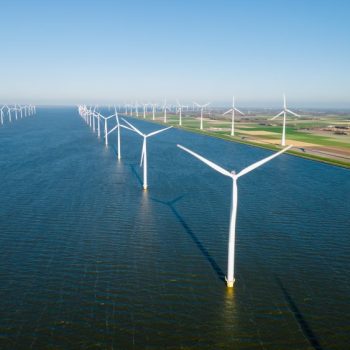
Chinese President Xi Jinping took everybody by surprise last September when he committed China to achieve net-zero emissions by 2060.
But while this is a major commitment towards clean energy, China is still carrying on burning coal. China’s growing energy needs – with total energy consumption expected to grow by about 2.5%-3% per year between 2021-2025 – and ensuring security of energy supplies, require growing all its energy resources.
So what are the implications on global energy of committing to net-zero-emissions, decisions made at the 14th Five Year Plan, and the growing confrontation with the US?
China is home to the world’s largest population, consumes over 50% of the world’s coal and is the world’s biggest energy user and greenhouse gas (GHG) emitter. What China does matters – it has global implications.
Net-zero pledge
President Xi Jinping made his surprising speech at the UN General Assembly in September 2020. He announced that China will scale-up its nationally determined contribution and adopt more vigorous policies and measures with the aim of peaking carbon dioxide emissions before 2030 and achieving carbon neutrality before 2060.
He also addressed UN’s ‘Climate Ambition Summit’ on 12 December where he made additional pledges to tackle climate change.
His proposals included “closing ranks and making new advances in climate governance that features cooperation”, “raising ambition and fostering a new architecture of climate governance where every party does its part” and “boosting confidence and pursuing a new approach to climate governance that highlights green recovery.”
He also announced further commitments for 2030. These include lowering carbon dioxide (CO2) emissions per unit of GDP by over 65% from the 2005 level and increasing the share of non-fossil fuels in primary energy consumption to around 25%, by increasing total solar and wind capacity to 1200GW by 2030.
President Xi pledged that China will take on a greater role in global climate action. Given that the country is responsible for almost 30% of global energy-related CO2 emissions – about twice those of the US – this can have far-reaching implications.
But details on how these pledges will be achieved are lacking. Many hoped that this will be addressed in China’s 14th Five Year Plan (FYP). But they were mostly disappointed.
14th FYP
China approved its 14th FYP on 11 March, covering national economic and social development plans for the period 2021-2025, and longer-term targets for 2035. What is notable about it is that it departed from the norm in previous FYPs by not setting economic growth targets. In addition, despite expectations, it failed to set an emissions cap and has also set lower than expected climate-related targets for 2025. It is weak on climate ambition but heavy on self-sufficiency. However, the plan re-confirmed China’s 2030 and 2060 pledges.
FYPs are approved by China’s top legislature, the National People’s Congress (NPC), and guide the country’s economic and social development over the following five years.
The 14th FYP has laid out a system based on issuing annual ‘indicative economic growth targets’, with GDP growth expected to reach at least 6% in 2021. Leaving out hard growth targets is considered to be potentially good for the environment. It also reflects uncertainty related to the global economic recovery post-Covid-19 and the potential impact of the growing confrontation with the US.
Energy is central to the plan. According to this, by 2025 China will reduce energy intensity by 13.5% and carbon intensity by 18% in comparison to 2020, and increase the share of non-fossil sources in its energy mix – renewables, hydropower and nuclear – to about 20%, from 16% now. The latter is not a ‘binding target’. It also includes a target to increase forest coverage to 24.1% from 23.4% in 2020. In addition, the plan promises further development of hydrogen and energy storage.
The FYP also provides for the development of coal, oil and natural gas under the condition of “clean and efficient utilisation”, but it does not specify the share of coal in the energy mix. In 2020 coal provided about 57% of the total energy consumed by China. Also, 250GW of new coal-fired power plants are under development – more than the entire generating capacity of the US.
More details will become available by the end of the year, when China is expected to release specific five-year plans for energy, as well as – for the first time – a climate five-year plan and an emissions-peaking plan.
These plans may shed light to the level of coal consumption over the next five years – that plays such a major role in the level of emissions. This, though, may depend on how global geopolitics develop.
As a sign of what is to come, the China Coal Association announced recently that coal consumption in 2025 would be capped at 4.2billion tonnes, which is close to the current level. But with oil and gas consumption expected to grow, peaking and declining CO2 emissions would require coal consumption not only to stop growing but also to begin falling as soon as possible. This does not appear to be the case.
The FYP places a heavy emphasis on protecting China’s energy security in the face of global “change.” Maintaining and increasing domestic production and where possible achieving self-sufficiency are key parts of an overarching energy security strategy.
During the preparation leading to the 14th FYP, Chinese Premier Li Keqiang said that China’s coal industry needs to remain strong to play a key role in the country’s energy security. He emphasized that energy security is China’s long-term strategy and priority, while downplaying the importance of a rapid transition away from fossil fuels. These are now key priorities in the FYP to 2025.
In addition, China is adding clean energy, including nuclear, to the country’s power generation mix faster than any other country in the world – not just in response to climate change, but also as part of the drive to achieve self-sufficiency and technology exports.
Driven by supply security concerns, China is also giving priority to sourcing oil, gas and LNG from what it considers to be “mutually beneficial cooperation” countries, such as Russia, central Asian countries, some Middle East countries and East Africa. Iran has now been added to the list though the 25-year China-Iran strategic agreement signed by the two countries on 27 March, expected to increase bilateral trade by $600billion over the next decade. Such developments may affect global oil and gas trade, and particularly LNG of which China has been expected to be become a major importer.
Based on these plans, it would appear that China does not intend to accelerate its climate change-related commitments. This, and avoiding being tied to a peaking emissions target, may be driven in part by the growing confrontation with the US, causing China to prioritise security of energy supplies.
Growing confrontation with the US
The deteriorating relationship between the US and China was laid bare in front of the world’s media on 19 March at the high-level talks between the two countries that took place at Alaska. They were ill-tempered and at their most strained for years.
The US went as far as to describe the relationship as a geopolitical competition between democracy and autocracy. The Chinese responded by accusing the US of making a “groundless attack on China’s domestic and foreign policies”.
Trade, technological competition, human rights and democracy are at the centre of disagreements between the two. Many are referring to this confrontation as a new ‘cold war’.
The US approach is: “Challenge China whenever necessary and cooperate where possible.” But will this work? Conversely, China is signaling a desire for an improved relationship, but at the same time it carries on pursuing its own interests aggressively and with increasing confidence.
The US-China confrontation does not appear to be a short-term event and may be causing irreversible, long-term, changes to China’s energy policies.
With tensions between China and the US/Europe expected to continue, the deteriorating relationships could also undermine global energy trade and economic growth.
What happens between the US, EU and China and the extent the confrontation takes, may play a major role in shaping China’s future energy policies and emissions. Cooperation on tackling climate change may become the victim of this.
What does it all mean
The 14th FYP not only guides China’s economic development but also has huge consequences for global carbon dioxide emissions and climate change.
The new climate targets in the FYP have led to extensive discussion about China’s ambition to tackle its rising emissions, to the extent that some have expressed scepticism about its longer-term climate pledges.
Chinese energy and climate experts believe that China is “on-track” to fulfill its promise of peaking emissions by 2030, but many say more efforts would be needed to meet net-zero by 2060. However, it may be too early to say.
In the meanwhile, China’s economic recovery from Covid-19 has been swift, but so far it has been anything but green. In contrast to all other major economies, that saw a drop in emissions, China ended 2020 with emissions rising by an estimated 1.5%. The average annual emissions growth during the 13th FYP was 1.7%. Indications from the 14th FYP are that emissions will continue growing for at least the next five years, but the rate will depend on the level of GDP growth.
This, combined with the rather limited growth in energy from non-fossil sources by 2025, means that by the end of the 14th FYP China will not be in line with the Paris agreement and may struggle to meet its 2060 net-zero goal – unless of course it over-delivers on its climate targets, which it has the habit of doing.
The positive take from the FYP is that there is growing emphasis on green development in China’s plans, rather than on the historical single-minded focus on GDP. This shows that the country sees a strong national interest in reducing emissions over time – even if at a slower pace than expected.
China is embarking on a complete transformation of its economy and how it produces, transports and consumes energy, with emphasis on self-sufficiency. It is determined not only to reduce, but eventually to also eliminate reliance on others and turn the tables round on innovation and technology. Already about 75% of global lithium-ion battery production, half of the world’s electric vehicles and almost 70% of all solar panels are made in China.
But the worrying news end of March was that China did not participate at the critical meeting organized by the UK in preparation for COP26 in Glasgow in November. The US, EU, India and 32 other countries were there, but China was missing even though it was invited. This became the victim of the escalating row with the UK, but also the US and EU, on human rights.
However, China did participate at the ‘Net-Zero Summit’ organized by the International Energy Agency (IEA) on the same day. The Summit was a critical milestone on the road to COP26 and brought together representatives of countries covering more than 80% of global GDP, population and emissions.
It is not clear whether China will be prepared to participate at COP26 with UK as hosts. John Kerry said recently that “the logical approach of western nations is to carve out a constructive place to engage with China on climate change amid the very real differences on other issues.” However, it’s not yet clear if Chinese leaders will be prepared to go along with this.
In fact, there was a view at the IEA Summit that the latest tension between the US/EU and China over human rights is spilling over into the climate scene.
Experts now see the trade and technology wars between US and China extending into a climate change war, an area where both are turning their attention to achieve commercial supremacy.
The obvious concern is that a prolonged and deepening confrontation between the US and China may lead to energy security taking priority in China at the expense of actions to address climate change, at least in the short to medium term. But with President Xi committing to it, it still is more likely than not that China will meet its 2060 net-zero pledge.
Dr. Charles Ellinas, Senior Fellow Global Energy Center Atlantic Council
Read more about NET ZERO ENERGY News Here, about Blue Green World Here, about Publishing World News Here, about You read, we publish Here













